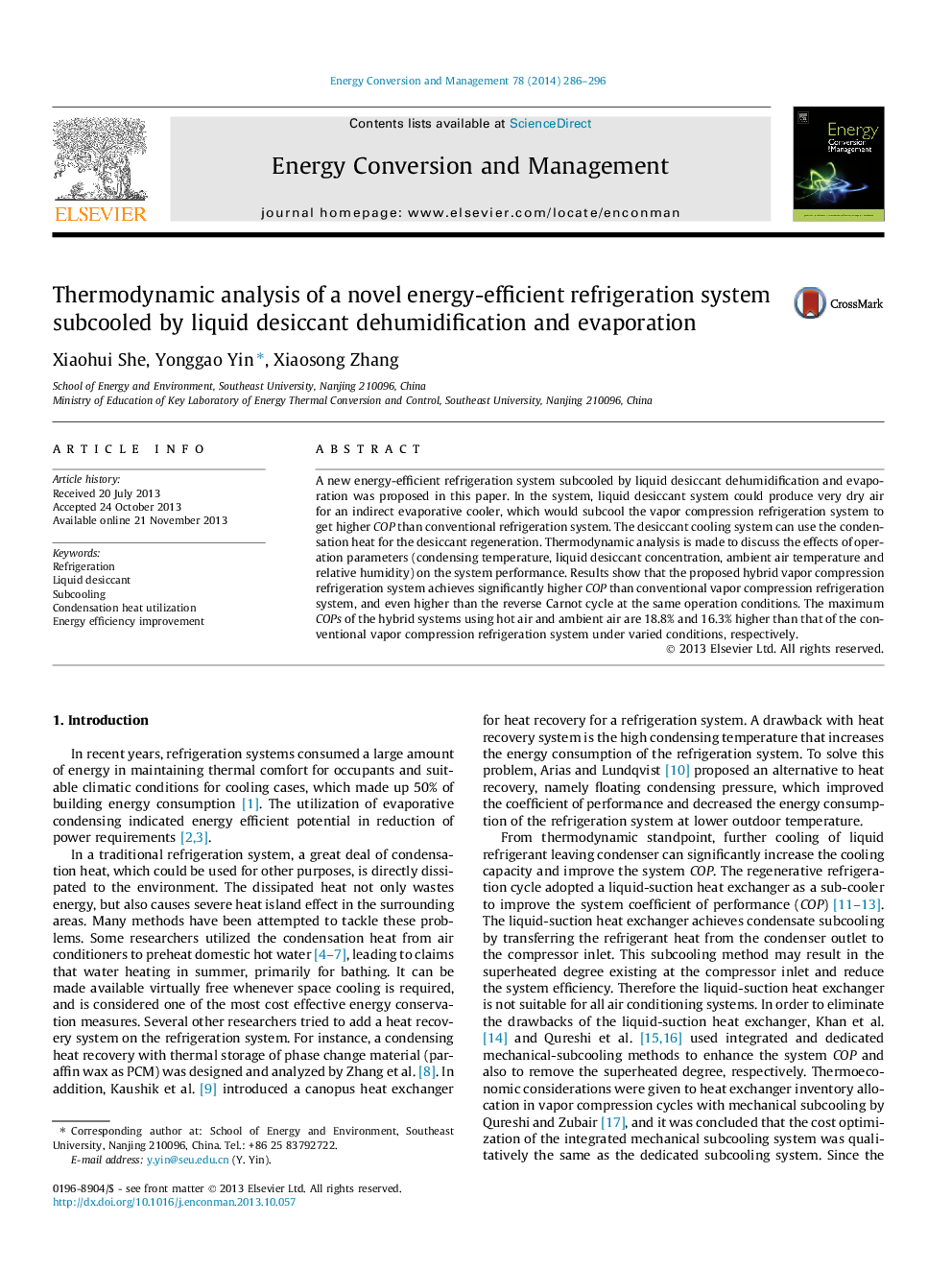| Article ID | Journal | Published Year | Pages | File Type |
|---|---|---|---|---|
| 764082 | Energy Conversion and Management | 2014 | 11 Pages |
•An energy-efficient refrigeration system with a novel subcooling method is proposed.•Thermodynamic analysis is conducted to discuss the effects of operation parameters.•Two different utilization ways of condensation heat are compared.•The system achieves much higher COP, even higher than reverse Carnot cycle.•Suggested mass concentration for LiCl–H2O is around 32% at a typical case.
A new energy-efficient refrigeration system subcooled by liquid desiccant dehumidification and evaporation was proposed in this paper. In the system, liquid desiccant system could produce very dry air for an indirect evaporative cooler, which would subcool the vapor compression refrigeration system to get higher COP than conventional refrigeration system. The desiccant cooling system can use the condensation heat for the desiccant regeneration. Thermodynamic analysis is made to discuss the effects of operation parameters (condensing temperature, liquid desiccant concentration, ambient air temperature and relative humidity) on the system performance. Results show that the proposed hybrid vapor compression refrigeration system achieves significantly higher COP than conventional vapor compression refrigeration system, and even higher than the reverse Carnot cycle at the same operation conditions. The maximum COPs of the hybrid systems using hot air and ambient air are 18.8% and 16.3% higher than that of the conventional vapor compression refrigeration system under varied conditions, respectively.
